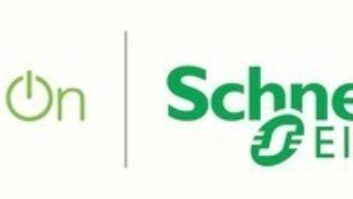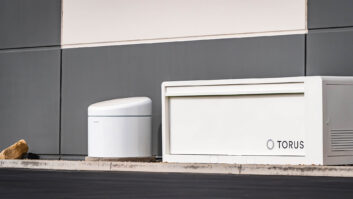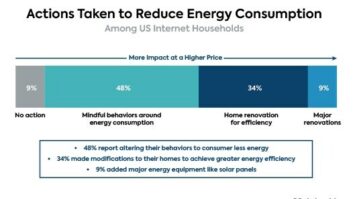Global warming, energy market volatility, and geopolitics have converged in the past decade. What’s required to prevent irreparable climate change is action, not just good intentions.
According to the United States Environmental Protection Agency (EPA), scientists have observed that global warming is changing the very nature of our planet: “Effects include sea level rise, shrinking glaciers, changes in the range and distribution of plants and animals, trees blooming earlier, lengthening of growing seasons, ice on rivers and lakes freezing later and breaking up earlier, and thawing of permafrost.”
Global warming is a serious challenge requiring a unified effort. Governments, manufacturers, and consumers alike must start putting themselves into the energy equation and holding themselves accountable.
Policy makers must draft consumption regulations, buildings must operate with more “intelligence,” and homeowners need intuitive solutions that take the guesswork out of saving energy. Walking from room to room unplugging toasters and hairdryers will save the “phantom” load. But it’s a dreadfully tedious chore, which is why more people don’t do it. This is where Schneider Electric comes in.
Making energy more “intelligent” and visible is Schneider’s mandate, and they shared the specifics of their global strategy last week in Newport, Rhode Island, at their Annual Editors Event.
With operations in 100 countries and sales last year topping 18 billion euro, Schneider continues to influence the global market for the electricity and energy management, automation solutions, and energy education. The company makes and sells more than 800,000 energy-related SKUs.
Based in the company’s U.S. headquarters in Rhode Island, Neil Rasmussen, founder and chief innovation officer of American Power Conversion, a Schneider brand, outlined the main global energy concerns within Schneider’s five end markets. He described the challenges and opportunities of managing energy in the infrastructure sector, industrial processes, building automation, and data centers, as well as residential applications. Across these various markets, the denominator for Schneider is: “Making energy safe, reliable, and efficient.”
Cassie Quaintance, Schneider’s energy market segment manager, described in detail how the company walks the walk every single day. At the Schneider Electric North American facility, the company has implemented sustainable and energy efficient practices that each employee is expected to follow.
A broad initiative, Energy University, is Schneider’s web-based, on-demand resource offering myriad courses for professionals who want to bring more efficiency to their office or project. (Energy University courses are focused on the end markets that represent 72 percent of the worldwide energy consumption.)
From architects to custom installers, there’s something for everyone.
While achieving greater efficiency and cutting Co2 emissions is good for the environment, businesses must justify their return-on-investment. That’s why Energy University gives students the tools to understand and calculate energy consumption, applications, and ROI data.
Other noteworthy developments discussed at the event include the launch of Eco StruXure, a new Schneider division devoted to supporting energy efficiency best practices in IT and automation markets around the world.
Aaron Davis (pictured), chief marketing officer, Schneider Electric, explained how Eco StruXure will show businesses how to run cleaner operations that minimize the eco-impact and make financial sense. “Companies need to grow, but how can they keep the growth ‘smart?’” he asked.

For Davis, it’s all about “energy optimization” by developing workbooks and tools. Put the systems in place to implement, monitor, and recognize where inefficiencies occur.
Eco StruXure’s program Little Green Men exemplifies their mission. Little Green Men recruits young professionals in “re-emerging economies” (AKA developing nations) to audit facilities to bring energy efficiency businesses. Their program Bip Bop recently brought electricity to a Vietnamese fishing village.
Across a few oceans in South Africa, Schneider joined forces with a mine to deliver power utilities more efficiently and safely. In India, the company recently acquired Conzerv, the Indian service provider for industrial and commercial end-users. With this acquisition, Schneider says it will reinforce its develop innovative strategies to meet the growing energy demands in India.
The flurry of product announcements underscored the company message. The Schneider brand called Square D released new intelligent products such as the commercial grade Wall Switch occupancy sensor, now available in an ultrasonic/passive infrared
dual-technology format, along with an ultrasonic-only model. It’s designed to maximize energy savings with virtually no adjustment required. Keeping it simple is key.
APC’s Smart-UPS RT product line also keeps operations simple with four new models in 3U and 12U size for rack/tower installations. The line is designed for IT or facilities integrators who manage server rooms and network closets.
According to TAC, a Schneider brand, the average building uses 20 percent more energy than needed. Imagine that each office and home in the world could not only cut that excess but also contribute to the local ecosystem with sustainable energy supplies.
Custom installers interested in ways to save energy in the home might want to check out APC’s IP-enabled products like the S20 Power Conditioner. It’s an RS-232 system that is equipped with battery backup, network manageability within a home automation system, and temperature/humidity monitoring.





